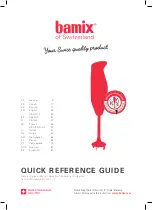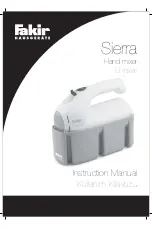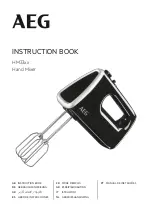
29
S
ERIAL
P
ORT
C
OMMANDS
A
VAILABLE
All LecNet devices use a modification of the typical one-to-one connection between two RS-232 compatible devices. LecNet
devices have both an RS-232 transmitter and receiver section. The transmitter section is “tri-stated”, or placed in a high
impedance mode, until the particular device is addressed. To facilitate the simple parallel connection of multiple devices on
a single RS-232 port, an addressing scheme is employed to route commands from the host to the proper LecNet device.
When a device receives its address from the host computer, it temporarily turns on its RS-232 transmitter long enough to
send whatever data is requested by the host. In this way, multiple devices may drive a single transmit signal back to the
host, because only the addressed device will turn on its transmitter.
Valid address values are 128-254 (80 hex-FE hex). Address 255 (FF hex) is reserved and must not be used. Because a LecNet
device will interpret any single data byte whose value is greater than 127 as an address, single byte data (as opposed to
addresses) sent from the host must be in the range of 0-127. If a data value needs to be sent from the host that exceeds
127, the host must format two bytes of output such that the first byte is the lower 7 bits of the 8 bit value, and the second
byte is 1 if the MSB of the data byte is 1, or 0 if the MSB of the data byte is 0.
All interchange of commands and data with any LecNet device should be done in hex rather than ASCII. The only exception
to this is the return data on the Get Device Name command (see command description below).
Each LecNet command must be preceded by the address of the device to be controlled. If a device with the requested
address exists on the system, it will respond by sending a 0 (0 hex, not ASCII) back to the host. Some serial controller
devices may simply send commands and data to a LecNet device and have no need to receive data. In this case, step 2 below
is replaced by a minimum 25 millisecond wait. This wait is necessary to insure that the addressed LecNet device is
“listening” and can respond to the command. Thus, each interchange with a LecNet device follows this pattern:
1)
Host sends device address in hex (1 byte);
2)
Host receives byte of 0 hex from the LecNet device as acknowledgment;
3)
Host sends command (1 byte, hex) to the LecNet device;
4)
Host and LecNet device exchange data based on particular command sent.
Note that some LecNet commands cause LecNet devices to return an additional acknowledgment byte of data to confirm
the end of a transaction. This is most typical of commands that cause the LecNet device to be busy for more than a few
milliseconds processing the command. The additional acknowledgment byte lets the host know that the LecNet device is
no longer busy and can receive more commands. If a command does return an additional acknowledgment byte, this will
be explicitly stated in the command description.
As an example of a specific interchange between a host and an AS16x12 the following general procedure would be used to
get a name string back from an AS16x12:
Set up the communications parameters of the device which will be the host. The correct parameters for all LecNet devices
are 9600 baud, no parity, 8 data bits, 1 stop bit. This must only be done once when the host is initialized.
1)
Host sends device address. For a factory default AS16x12, this would be 139, or 8B hex (1 byte);
2)
Host receives byte of 0 hex from the AS16x12 as acknowledgment;
3)
Host sends command 1 hex (1 byte) to the AS16x12 to get the name data;
4)
The LecNet device sends to the host 7 bytes. The first byte is 6 hex, which is the number of bytes in the
AS16x12’s name string. The AS16x12 will then send the ASCII characters “A”, “M”, “1”, “6” , “1” and “2”
to the host.
The following section is a listing of available commands grouped based on the AS16x12 function to which the commands
are related. The word “Host” in the command descriptions means the IBM PC or compatible, AMX controller, or Crestron
controller to which the AS16x12 is connected. If you are using an AMX system to control your LecNet equipment, you’ll
want to purchase the Lectrosonics PT3 Protocol Translator. The PT3 connects between the AMX bus and any LecNet
equipment. With the PT3, the LecNet equipment behaves like native AMX equipment. The PT3 is the fastest and most
productive way to control LecNet devices with an AMX system. Crestron has macros available on their website for
Lectrosonics equipment at http://www.crestron.com.
The following commands are described from the perspective of the host. A “Get” command allows the host to receive
information from the AS16x12. A “Set” command allows the host to send information to set some parameter in the
AS16x12. All commands and data have both the decimal values and hex values noted in the command description.








































